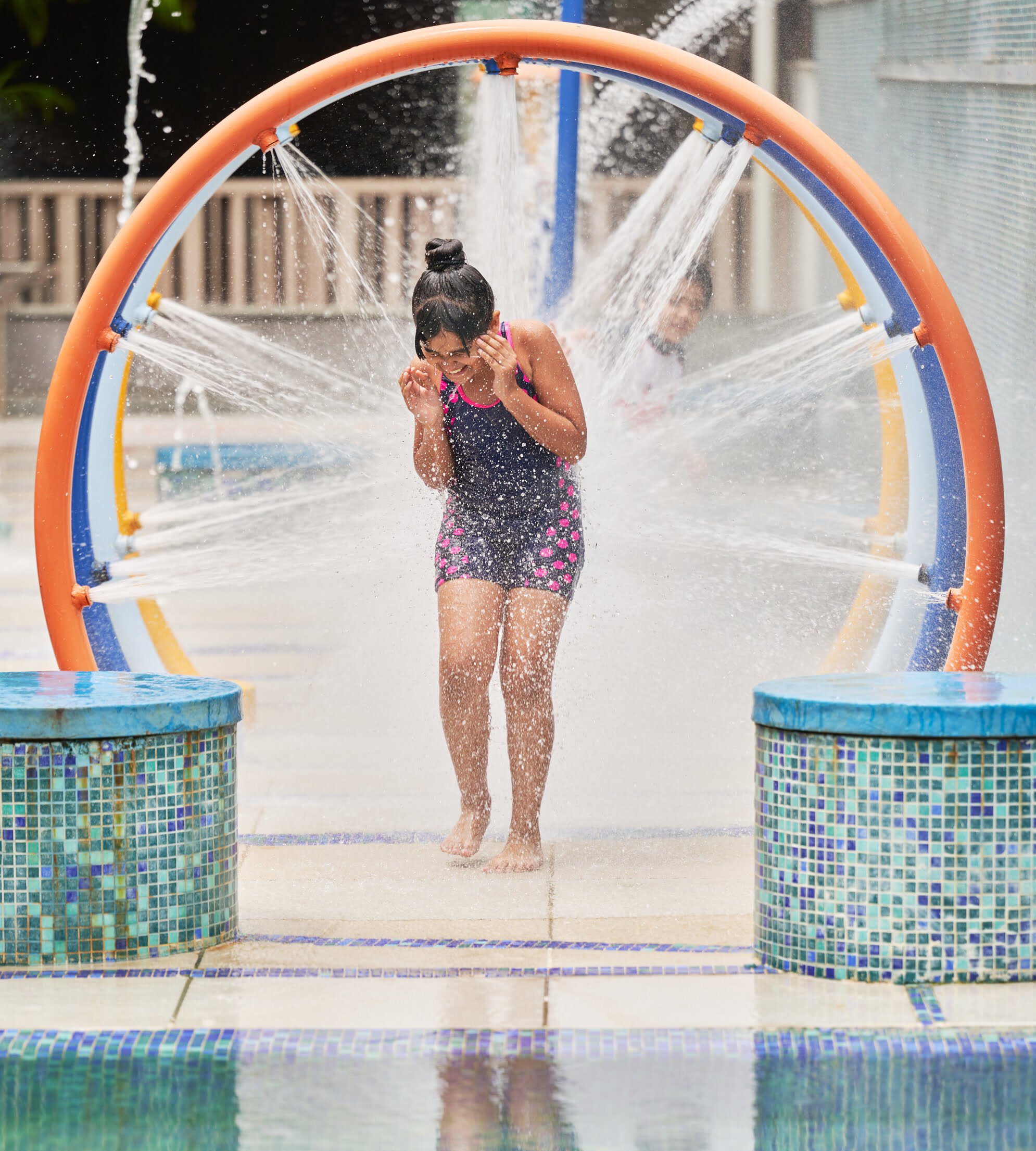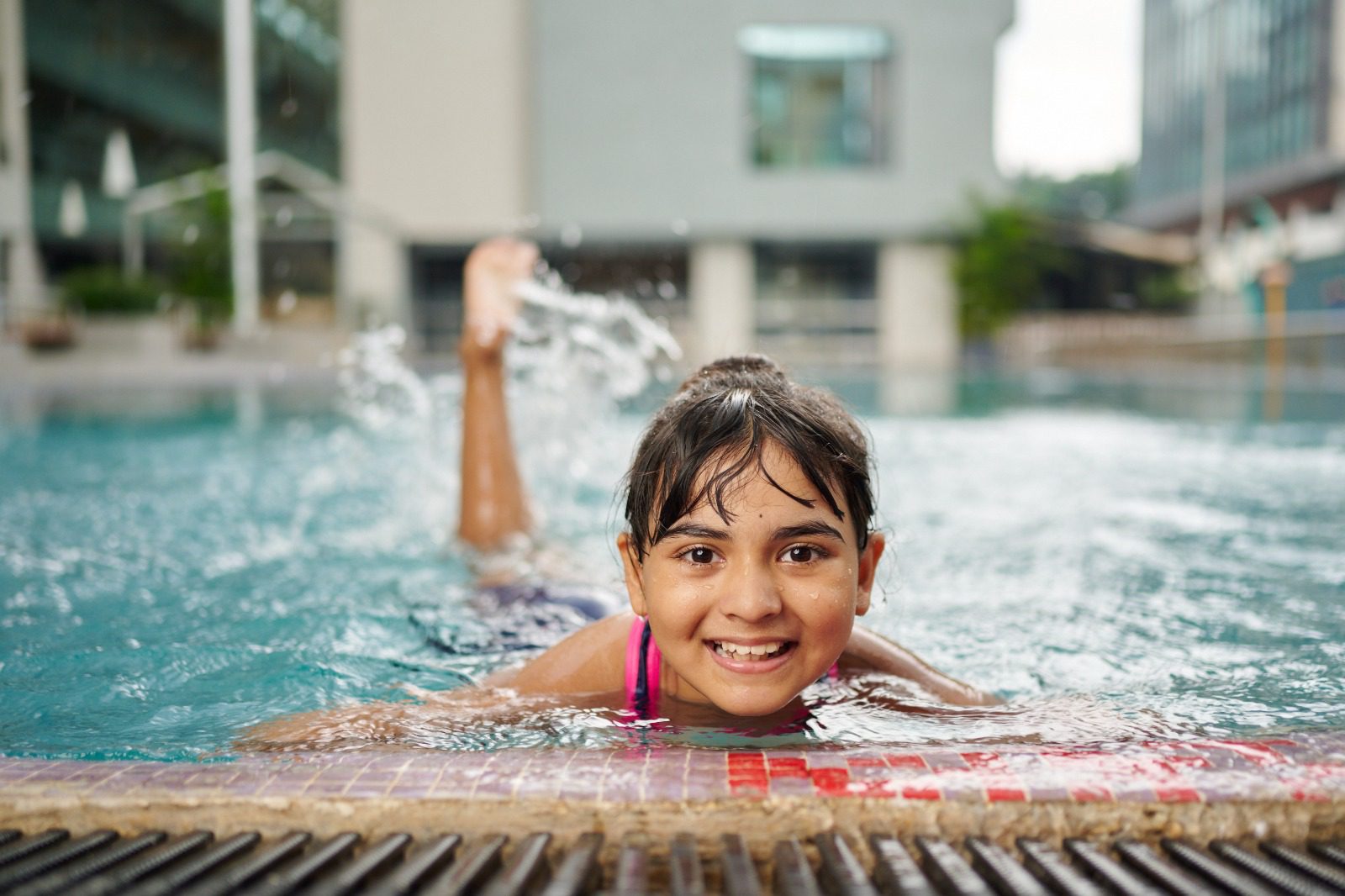Swimming safety is super important for all swimmers, no matter whether you are a beginner or a pro. Why? Accidents can happen to anyone, so learning how to swim safely can prevent that. When a beginner just starts swimming, he/she may not be familiar with the challenges they can face in the water. Learning how to swim safely helps beginners build confidence and reduce the risk of accidents. When professional swimmers participate in open water swimming, they swim in tricky locations like oceans, giant lakes, and big rivers. Water can be tricky at such places with currents and depths, so swimming safety measures become crucial in such cases.
Swimming is fun and healthy, but if we are not careful we can get hurt. Plus it is smart to know what to do when someone is in trouble in the water. So swimming safety is our superhero cape; it ensures enjoyment, fitness, and most importantly life safety in the water.
In this blog, we will be sharing some safety tips to enhance your swimming experience.
- Choose the right swimming location
It is very important to choose the right location for swimming. Prefer locations with lifeguards on duty whenever possible. Lifeguards are trained to respond quickly in case of emergencies. Lifeguards keep a watchful eye on swimmers and are equipped with rescue equipment. If you are swimming in open water be cautious of areas of strong currents, tides, or other hazardous conditions. Swimming in such places without lifeguards can be extremely risky. Keep in mind that water conditions can change with the weather and seasons so stay informed about the local weather conditions of the chosen swimming location before heading to the beach or pool.
Before jumping into the water there are a few things you should do. First, make sure you have the right swimwear and goggles that fit you well. Then do some gentle exercises like stretches to warm up your muscles and prevent cramps. Always check the water conditions and be aware of any rules at the swimming spot. Make sure you can swim in that area and check the location of the lifeguards. Don’t eat a heavy meal right before swimming. Keep yourself hydrated, and drink plenty of water. Avoid consumption of alcohol. These simple steps will help you have a safe and fun time in the water.
- Use water safety equipment
Using water safety equipment is important for swimmers of all levels, no matter if you are just starting to swim or you are really good at it. Knowing how to use water safety tools is a fundamental aspect of ensuring your and others’ safety. Learn about all water safety equipments in your swimming sessions from your swimming coach, and make sure you use those equipments every time you swim. They help to keep you safe if something unexpected happens.
- Follow rules and etiquette
Rules are for good reason, they help prevent accidents and chaos. Make sure you are aware of all the rules at the swimming spot before jumping into the water. Don’t purposefully splash others. Share swimming space. By following rules and practising good swimming etiquette, we not only protect ourselves but also contribute towards a more enjoyable swimming experience for all.
- Learn CPR techniques and first-aid skills
Accidents can happen anytime and anywhere, in or around water. Knowledge of basic first aid and CPR can be a lifesaver. First aid skills can help you take immediate care of minor injuries like cuts. Having CPR knowledge can be a lifesaver if someone experiences drowning or sudden cardiac arrest in or around water. These skills give you the power to take immediate action in emergencies, for yourself or others.
When we talk about swimming safety, children take centre stage. Children are naturally curious about swimming but they may not be aware of potential dangers. Always monitor children when they are in or around water. Educate your child about water safety irrespective of whether they know swimming or not. For the safety of your swimmer child, teach them the importance of listening to lifeguards and following pool rules. If your child is not a strong swimmer, ensure to enrol him/her in swimming classes and give them proper swimming training before getting into the water.
- Learn essential swimming skills from professional coaches
Learning swimming lessons from professional coaches can be adventurous for you. Apart from giving you the best training, they can teach you vital water safety knowledge such as recognizing hazards, and understanding currents. At The Acres Club, our experienced and professional instructors ensure that you not only learn to swim but also understand essential safety measures in and around water.
- Identify common swimming hazards
Common swimming hazards can occur even in the most inviting pools or pleasant beaches. Some common hazards include hidden underwater rocks, underwater obstacles, slippery areas by the pool, and strong water currents. Keep an eye on sudden weather changes. Weather change can make swimming risky.
Skin care is often underestimated in swimming. The chlorine in the swimming pool water, sunlight, and saltwater in open water swimming can be tough on your skin. So applying sunscreen on your body before going to swim is like wearing a safety shield to protect your skin from the harsh UV rays. After swimming, rinse off to remove pool chemicals or salt from your skin. It is important to moisturise your skin after swimming to keep it hydrated.
Know your limits
Last but not least, it is important to understand your limits. Knowing your limits means you should be aware of how comfortable and skilled you are as a swimmer and not pushing yourself beyond that point. Knowing your limits can prevent exhaustion, panic, and potential accidents and make swimming more fun and safe.
Following these tips can make your swimming experience joyful and safe.
To conclude, swimming is a joyful and refreshing activity that can bring fitness to our life. However, it comes with its share of risks. Safety while swimming is a very important aspect of swimming and we should not underestimate it. Learning the right skills, knowing the rules, spotting the hazards, and knowing your limits can make you safe in the water. So when you jump in the water, be smart and make your every swim memorable!
Stay tuned for more exciting blogs coming your way! Comment your queries regarding sports and sports coaching and we will answer them in our FAQ blogs.
Read our next blog Badminton & Beyond: From Evolution To Popularity In India.



